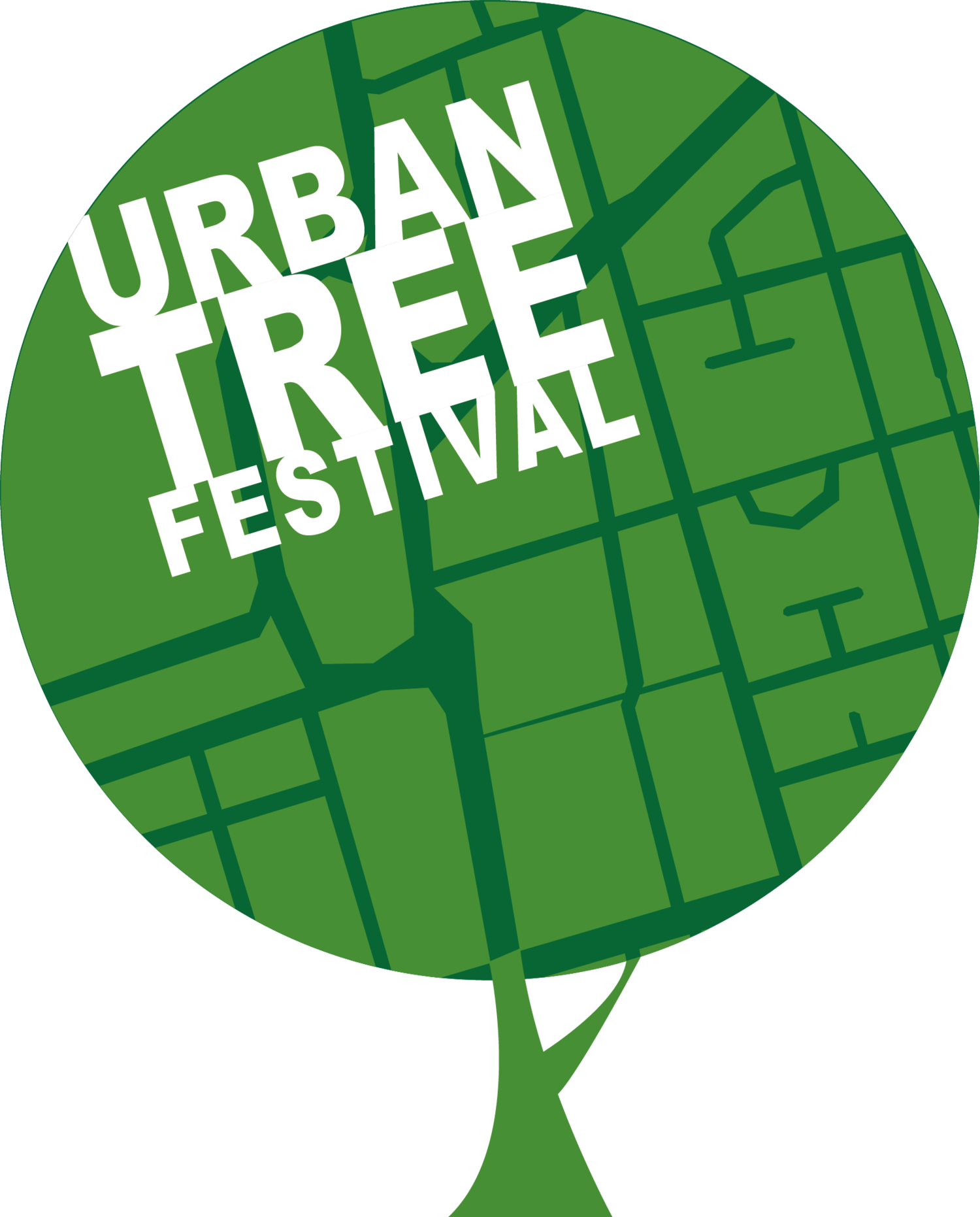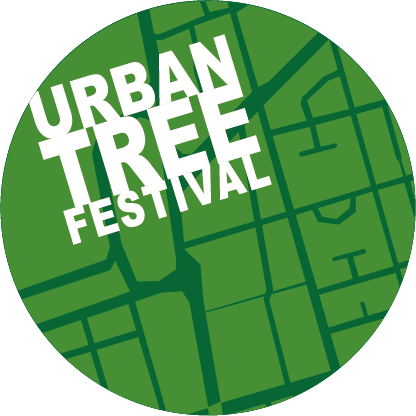
An Introduction to Brighton & Hove’s Elm Trees
Exploring The National Elm Collection
Ticket Information
Brighton & Hove’s Elm Trees Walk
Date: Saturday May 14 & Saturday May 21. Time: 10:00
Location: East Street, Brighton
Tickets: FREE, donations welcome (booking essential)
Join us in this walking tour with Brighton and Hove's Elm tree experts, discover a few of the treasures in our National Elm Collection.
Realising a vision - to share the city’s unique elmscape with local residents and visitors.
People living in Brighton can reel off a list of reasons why they like living here: the sea, the pebbled beach, the nearby rolling Sussex Downs; the city’s iconic architecture, including the Royal Pavilion which was built as a seaside pleasure palace for King George IV; The Lanes with the quirky shops and winding alleyways.
Few people nominate trees as one of the city’s best assets. I’d like to change that!
Brighton has many world class trees which deserve to be much better known.
The city is the custodian of the National Elm Collection thanks to the work done over the decades, to protect the number and variety of elm trees in the city.
Brighton’s most famous elm is the 400-year-old Preston Twin still standing in Preston Park.
Surviving Preston Twin
Its twin was felled in 2019 after it became diseased but its knotted and twisted trunk lives on and is being preserved and strengthened. Recently it has been returned to its original site opposite its twin in Preston Park where artist, Elpida Hadzi-Vasileva continues to work on it to transform into a permanent sculptural art form.
Despite the ravages of the deadly Elm disease, Brighton still has over 17,000 elm trees which include 125 different varieties - more than any city in the world.
Elms come in all shapes and sizes. You know you have found one if it has a distinctive asymmetric leaf base and pointed oval leaves with one side more lobed than the other at the stalk.
Elm leaf
During May and June, our pavements are layered with hundreds of thousands of elm seeds blown off the trees like fallen leaves
elm seed
Elms alter the character of the city with their myriad cooling shades of green in spring and summer and contrasting sculptured forms in winter.
As an introduction to the special collection of elms in the city centre, we are offering a guided walk at the start of the Urban Tree Festival on Saturday 14th May and the following weekend, on Saturday 21st May. They will be led by local elm tree experts, Peter Bourne and Alister Peters, Brighton based Arboricultural Consultant and authority on elm disease fungus. Booking and ticket information
Telling the story of Brighton & Hove’s Elm Trees
Some of our elms were thought to be extinct but recently , elms not found anywhere else, have been identified by local resident and elm tree expert, Peter Bourne.
Peter Bourne
Peter Bourne
Peter has been researching elms for most of his adult life. His expertise is recognised among tree specialists in the UK, Europe, Australia and New Zealand. He is the leading elm tree amateur in the world and ranks in the top twenty professional experts world-wide. He writes extensively on elms and contributes to Wikipedia’s extensive reference on elm trees.
Peter’s work as an amateur on behalf of Brighton & Hove Council has been put forward for the prestigious Brickell Award . Nominations from other regions of the UK will be considered and the results are expected to be announced in the summer 2022. The Award is made for demonstrating excellence in plant conservation.
One day I hope someone names a new variety of elm after him – the Bourne elm would be testament to his dedication and hard work for the city’s elms.
“After the storm in October 1987…we went all over Brighton and recorded trees….trying to find out how much was lost in the storm, nearly 2000 Elms were lost…”
Fast forward 35 years and Peter is a vital member of a international research group working to collate data on and identify Elm trees. Members of this informal group include David Shreeve, The Conservation Foundation, Alex Vallis, Edinburgh botanist and researcher, as well as tree specialists in Europe, Australia and New Zealand.
David Shreeve, Director, The Conservation Foundation
The Conservation Foundation has been creating and managing environmental projects, award schemes, awareness campaigns, publications and events covering wide ranging issues and aimed at different and diverse audiences since 1982.
“We had a tree planting project that gave disease resistant Ulmus “Sapporo Autumn Gold” to schools across the country and Peter Bourne went all around the country recording these….So we have great records and now with this increase in interest government department DEFRA want to know some of our records, because we may have found trees which are capable of being propogated and continuing that resistancy, so it’s a really exciting time..”
“I think Peter Bourne is an Elm Tree….If I don’t hear from him for a while we get quite worried.” David Shreeve
Mark Seddon, Writer and Journalist, Elm enthusiast.
The English Elm is not really English.., it’s a Roman Elm, brought over by the Romans to prop their vine yards up. But it spreads by sucker and not by seed, which means the genetic material within the Elm is very similar, making it so much more susceptible to Elm disease, which is why when people talk about the 25 million Elm lost during the massive outbreak in the 60’s and 70’s it was mainly English Elm.
Recognition should be given and national support for this, a living national treasure.
Alister Peters, Aboriculture Consultant, Connick Tree Care and Brighton and Hove boroughs, 1985 - present
It’s so important to maintain the Elms here. It has been important to show the power of community involvement to protect the environment …and the power of the non expert… Forestry Commission were proved wrong!
We wage a campaign against the beetle because we can’t stop the fungus but …there is a lot of research going on .. developing cultivars of Elm which are resistant to Elm disease and those have got better and better…., we need to keep it diverse, plant other species as well as Elm and also be diverse in the Elm that we use.
We’re moving in the right direction… with the standard breeding programme, to produce Elms with the right shape and form, which will happily support key elements of wildlife like the White Letter Hair Streak Butterfly.
Peter Small, Arboriculture Manager 2020 to present
The National Elm Collection is a very prestigious award and it is a great responsibility to, as a team, be responsible for the upkeep of that. It’s a responsibility that we cherish and feel it is so incredibly important to maintain.
Elm log imports into the city is a growing problem, perhaps due to the increased use of log burners, it is also difficult to access and observe Elm on private land.
Neil Brothers, Tree Inspection Officer and Arboriculture Team 1981 to present
Our Elm trees are renowned throughout the world, so to be involved in protecting and maintaining them, as the National Elm Collection is very important to me as an arboriculturalist, and someone that loves the trees within the city. If we stop protecting…it would be devastating, the tree scape would change forever.
Rob Greenland, Arboriculture Team and Arboriculture Manager, 1970 – 2014
www.brightonelmtrees.com
We went along with anything from journalists to get publicity for Elm disease, John Harraway and I once being described as the sylvan Starsky and Hutch, patrolling the streets of Brighton, for which we took quite a lot of stick for quite a long time afterwards.
John Harraway, Brighton Borough, Tree gang and Arboriculture Assistant 1969 – 1979
The save the Elm Trees Campaign, was an exciting time, we talked to all people and politicians and it brought about a change of mood.
Ray Strong
John Harraway describes Ray Strong:
'‘Ray came across as rather a serious person but he was a real thinker and read widely, he thought about things and that’s exactly what he did with the whole control strategy.’
… and bringing you the new map
Vivienne Barton, Local tree lover and Elm enthusiast
Vivienne Barton
I first met Peter two years ago at the start of Covid in May 2020 when I was inspired to produce a leaflet, identifying and mapping dozens of Brighton’s special trees. Read about this project here . My latest and third leaflet –- is focused purely on the city’s elms. With Peter’s help, I have selected seventeen elms across the city all of which deserve to be better known. Some are champion trees, listed in the Tree Register, a national database of notable trees, because of their rarity, height or girth. There are elms not found anywhere in the world; some of the tallest and widest elms in the UK and many which rank as the best examples of their types in the county of Sussex.
Here are some more of my personal favourites:
Ulmus minor ‘Atinia,’ adjacent to North Gate
The oldest English elm in the Pavilion Gardens was planted in the 18th century before the gardens were established; the tree is completely hollow but healthy on the outside. It is more commonly known as the Brace tree because at the top of the trunk a large iron brace has been fitted to stop it collapsing.
The Brace Tree
Probably the most photographed elm in Brighton is a Weeping Wych elm, Ulmus glabra ‘Horizontalis’ planted in the Pavilion Gardens around the time of Queen Victoria’s Diamond Jubilee in 1897.
Weeping Wych elm, Ulmus glabra ‘Horizontalis’
Simon Edwards, GP, Urban Tree Festival Committee and creator of the TICL system
I designed TiCL to help enthusiasts, like Vivienne, map and link together, interesting and often overlooked things around them – such as Brighton’s wonderful elms. TiCL then helps people find those things physically and connects them to the best information about them online, like Peter Bourne’s detailed Wikipedia pages about the different elms.
It has been a pleasure working on this project with Vivienne and Peter. A small effective team weaving together local knowledge, expertise and technology to make the remarkable story of Brighton’s elms accessible and discoverable by everyone. I like to think other towns will be inspired do the same for their special trees.
You can find the elms mentioned here on the paper map:
and on a TiCL web page where you can also download the TICL App which will help you find these trees and many more, when you’re out and about.
TiCL web page Brighton National Elm Collection Highlights
Explore the Brighton and Hove Elmscape
The Victorians planted most of our elms; they especially excelled at planting avenues and streets because they knew how street trees transform a city’s image. Next time you walk or drive down any street in Brighton or Hove take a moment to look at the trees lining the route – they will almost certainly be elm trees. One of the best remaining examples of street planting is Shirley Drive, Hove which has a stunning avenue of Wheatley Ulmus minor ‘Sarniensis’ and Huntingdon elms Ulmus x hollandica.
Shirley Drive
It is impossible to imagine Brighton and Hove without these amazing elm trees - a sort of living museum on our doorstep.
I do hope you enjoy exploring them as much as we have enjoyed discovering and presenting them to you.
Contributor
Vivienne Barton, green spaces volunteer & local activist













